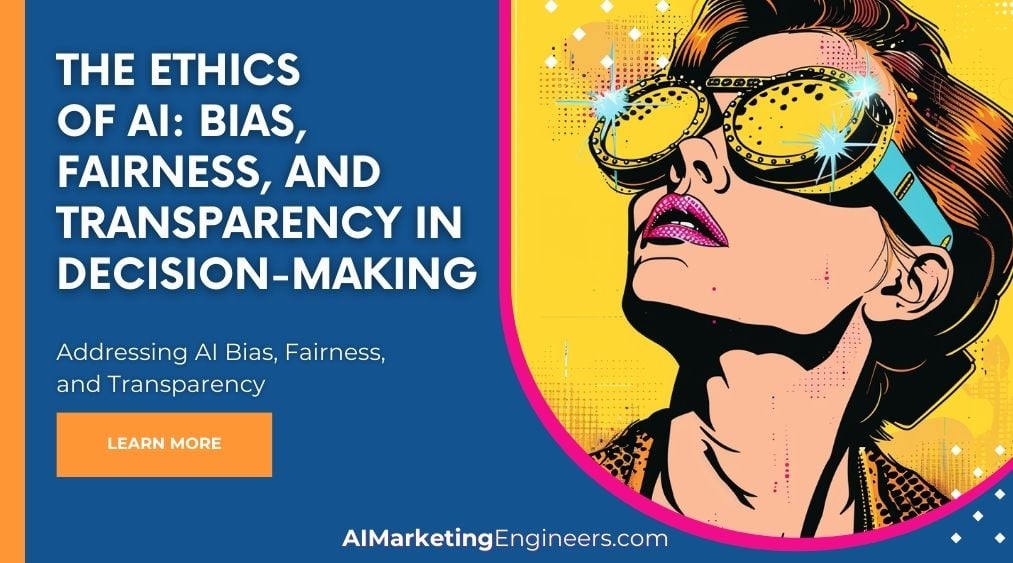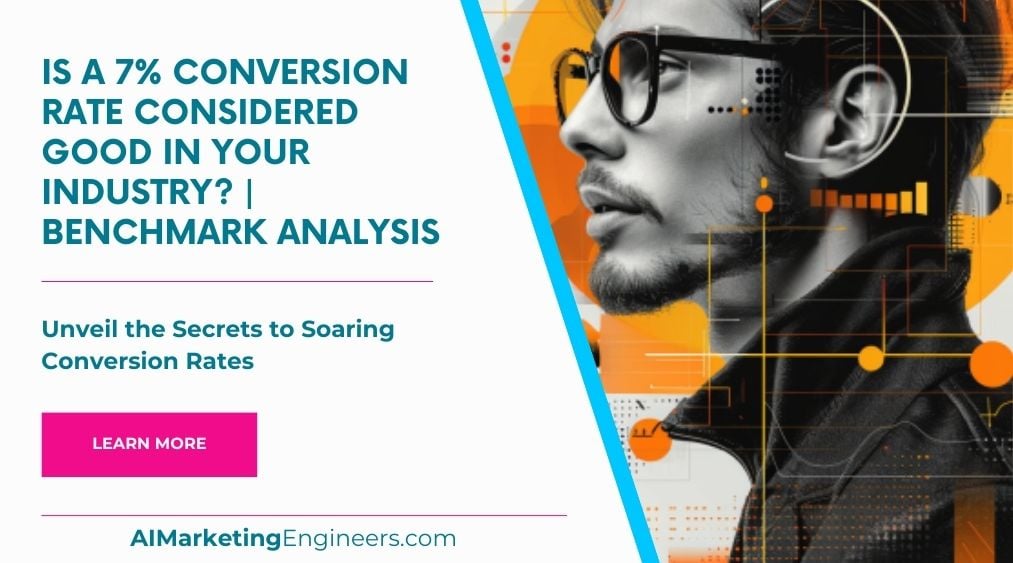Key Takeaways
✅ Bias: Have you ever considered the possibility that the AI systems you're using could be less objective than you? Believe it or not, they might be carrying a biased torch passed down from their human creators or the historical data they learned from. To combat this, there's a need for thorough data review, diverse data sources, and a keen eye on AI decisions.
✅ Fairness: Fair is fair, right? But when it comes to AI, defining fairness can be as tricky as trying to nail jelly to a wall! However, establishing set standards and using clear decision criteria are like the levels and rulers of AI fairness—they help ensure that decisions aren't just consistent but also just and non-discriminatory.
✅ Transparency: Everybody values a clear glass window over a murky one, and the same goes for AI systems. Transparency is key to trust. If you're going to rely on an AI decision, wouldn't you want to know how it got there? Clear explanations of the decision-making process, the data, and the training can turn AI from a mysterious black box into an open book that's easier to trust and hold accountable.

Introduction
Have you ever stopped to think about the virtual minds making choices behind the scenes? We're talking about The Ethics of AI: Bias, Fairness, and Transparency in Algorithmic Decision-Making. It's a big deal because these unseen digital decision-makers could be shaping your life – from the job you get to the news you read. But, how confident are you that these choices are fair, unbiased, and clear?
From the first time a computer program outsmarted a human at chess, to today's algorithms that decide who gets a loan and who doesn't, AI has been a game-changer. But it's brought along some serious questions too. We're looking at you, bias, fairness, and transparency. Imagine walking into a party where everyone's speaking a language you don't understand. That's almost what it's like diving into the world of AI without knowing these key concepts. So, how do we ensure the technology works for everyone?
What if you could peek behind the curtain of AI and understand not just the 'what', but the 'how' and 'why' of automated decisions? This article doesn't just skim the surface – it goes deep, revealing the innovators, the regulations, and the steps we can all take to harness AI's potential ethically. Stick around and you'll walk away with groundbreaking insights and actionable tips to help steer the future of AI, making sure it's not just smart, but also fair and clear. Ready to go on this journey? Let's explore this brave new world of ethical AI together.
Top Statistics
| Statistic | Insight |
|---|---|
| Global AI Market: Projected to reach $190.61 billion by 2025, growing at a CAGR of 36.62% from 2020 to 2025. (Source: PR Newswire, 2021) | The sheer scale of growth reflects the vast potential of AI but also hints at the complex ethical questions that will grow in tandem. |
| Bias in AI: 40% of AI professionals believe AI systems are at least somewhat biased. (Source: O'Reilly, 2020) | Almost half of the experts acknowledge bias, which is a big red flag. How we handle this shapes the trust we place in AI decisions. |
| Transparency in AI: 61% of AI professionals believe AI systems should be able to explain their decisions. (Source: O'Reilly, 2020) | Transparency is crucial—it's about understanding AI's reasoning, and it's akin to holding a mirror to the machine's soul. |
| AI in Financial Services: Expected to reach $40.41 billion by 2027, growing at a CAGR of 30.3%. (Source: Grand View Research, 2021) | Money talks, but in this case, it also thinks. As AI delves into finance, the need for ethical decision-making is paramount to maintain fiscal fairness and client trust. |
| AI and Consumer Expectations: 63% of consumers expect companies to use AI to improve their experiences. (Source: Salesforce, 2019) | When over half of consumers are watching, the pressure's on for businesses to use AI wisely and ethically. Nobody wants a biased bot deciding their customer experience. |
Understanding Bias in AI
When we talk about bias in AI, what comes to mind? Is it a machine that's been taught to think like a person with all their imperfections? In a way, yes. Bias in AI can sneak in through the data we feed into these systems, often reflecting our own history of uneven or prejudiced decision-making. Think about a job application screening AI: What happens if it's trained on data from a time or place where certain groups were unfavored? That's not a future we want, right? To fight this, tech folks are coming up with ways to spot and scrub clean these biases. They're essentially teaching the AI to be more open-minded, using algorithms that correct for skewed perspectives.
Ensuring Fairness in AI
But how do we make sure AI isn't just unbiased, but also fair? Fairness is this big umbrella term that means everyone gets an equal shot, no matter their background. It's not as simple as it sounds, though. There are different ways to measure fairness, and it can be a real head-scratcher to decide which one is right. One person's fair is another person's unfair, right? So, the great minds working on AI have to balance these fairness metrics, sometimes making tough calls on what fairness looks like in each situation. They're tinkering with the systems, ensuring that even as they learn and adapt, they keep playing by the rules of fairness we set.
Transparency in AI Decision-Making
Now, imagine an AI like a magic 8-ball that makes important decisions. You'd want to know why it said "certainly" rather than "ask again later," wouldn’t you? This is where transparency in AI kicks in. It's all about being able to see through the AI's "thought process." If an AI declines someone's loan application, the person has the right to understand why. That's a hefty challenge because AI brains – those complex algorithms – can be super intricate. The good folks working in AI are exploring ways to open up these black boxes, using tools to show us, in human terms, how the AI reached its conclusion.
Regulatory and Industry Efforts
Let's talk rules and teamwork. Governments and industries are realizing that we need some ground rules for ethical AI. In Europe, they've got things like the GDPR and are working on the EU AI Act to keep the AI in check. These laws are like referees in a soccer game, ensuring that AI plays nice. Then there are industry teams, like the Partnership on AI, creating tools such as the AI Fairness 360 toolkit. It's like a first-aid kit ensuring that AI systems are up to par on ethics. So, it's all hands on deck – governments, companies, and even academic folks are huddling together, sharing notes on how to keep AI on the straight and narrow.
The Future of Ethical AI
Where are we heading with all this ethical AI talk? It's a road filled with twists and turns. There are challenges, like building AI that's ethical by design, and there are opportunities, like using AI to stamp out biases instead of reinforcing them. The key players here? Education, research, and all of us coming together. It's like a giant group project with a goal to nurture AI that's not just smart but also fair and just. Imagine a world where AI systems are our allies in making better, unbiased decisions. That's a future worth working towards, where every step taken toward ethical AI is a step towards a better society.
AI Marketing Engineers Recommendation
Recommendation 1: Embed ethical AI practices in your company culture: Before jumping headlong into AI-driven strategies, reflect on the real-world impact of the technology. Start by collecting a diverse dataset that represents the variety of people your business serves. You see, data shapes AI, and if that data reflects only a narrow slice of life, decisions made by AI will be narrow-minded, too. Make sure to regularly audit your AI systems to check for biases. If you discover them—and chances are you might—act immediately to correct course. This isn’t just good ethics; it’s smart business. Why? Because diverse datasets help prevent costly missteps that can damage your reputation and bottom line.
Recommendation 2: Prioritize transparency with AI decision-making: This goes beyond just doing the right thing; it's about building trust with your customers. The recent push for more transparency isn't just a passing trend—it's a reflection of customer demand. Let’s not mince words: people are wary of AI. Many fear it's a black box they can’t understand or control. So, pull back the curtain! Explain to your customers how and why AI is making decisions. Can they see the logic behind AI’s choices? If they can, they're more likely to trust it—and by extension, your company. Plus, being open about your AI operations can set you apart from competitors who might still be shrouded in secrecy.
Recommendation 3: Leverage AI ethics tools to enhance fairness and accountability: There's a growing toolbox out there designed to help keep AI in check. Use them. Tools like IBM's AI Fairness 360 or Google's What-If Tool let you analyze and prevent discriminatory outcomes before they happen. And guess what? Businesses that proactively address AI ethics are often seen as leaders and innovators. By integrating these tools into your workflow, you’re not just preventing potential ethical lapses; you're showcasing your commitment to responsible AI. That's a powerful message to broadcast and one that can significantly differentiate your brand in a crowded market.
Relevant Links
Hyper-Personalization: How AI Defines Marketing Tailored to Every User
AI's Role in Shaping Personalized Brand Experiences
AI Ethics in Marketing: Steering Clear of the Moral Grey Zone
Addressing the Ethical Maze in AI-Driven Marketing Tactics
ChatGPT: Your Secret Weapon to Seamless and Innovative Marketing
Elevate Your Marketing Strategies with ChatGPT's Creative Genius
The AI Marketing Revolution: Transforming Data into Actionable Strategies
Harnessing AI's Power for Compelling Marketing Campaigns
Conclusion
So, where does that leave us? If you've been following along, you know we've covered a lot of ground when it comes to the tricky terrain of ethics in AI.
Think about it: the decisions that AI systems make can sometimes be about life-changing stuff, like getting a loan or landing a job. And just like people, these systems can come with their own set of baggage, like biases. How does that make you feel? Uncomfortable, right? But the good news is, there's a silver lining. We're figuring out how to spot this bias and zap it before it can do any harm.
And then there's fairness. It's like balancing on a tightrope, trying to make sure AI treats everyone equally. Not too heavy on one side, not too light on the other. Fairness isn't a one-size-fits-all kind of deal, but we're getting better at knowing what fits where and for whom.
But none of this matters if we can't see into the AI's "thought process," which brings us to transparency. How do we build trust if we have no idea how decisions are being made? Pulling back the curtain to reveal how neural networks and algorithms tick is crucial. It's all about shining that light for everyone to see.
Of course, we've got some rulebooks—laws and industry guidelines—that are trying to keep AI in check. It's a bit of a wild west right now, but it's shaping up. Remember this journey through the Ethics of AI? It's not a trek we make once. It's a constant hike, re-evaluating every step. Bias, fairness, and transparency—these aren't just lofty ideals. They're the signs guiding us to a future where AI and humans coexist in a way that's just and equal. So, how about we don our boots and get marching? Because trust me, that view from the finish line will be something else.
FAQs
Question 1: What does it mean when people say AI is biased, and why does that matter?
Answer: When we say AI is biased, we mean it might be making unfair decisions because of slanted information or the way it was programmed. It matters a lot because if we're not careful, AI could treat people unfairly and make the gap between groups of people even wider.
Question 2: Why would an AI system have biases?
Answer: An AI system can pick up biases for a bunch of reasons—like if it's fed data that doesn't represent everyone, if the way it's programmed is flawed, or if the people who make it are biased themselves, even if they don't mean to be.
Question 3: What's fairness in AI, and how do we get there?
Answer: Fairness in AI means that the systems treat everyone the same, without giving some people an advantage over others. We can strive for fairness by using varied data, making sure the programming isn't biased, and keeping a close watch on the AI to catch any unfairness.
Question 4: Why do we need AI to be transparent?
Answer: Transparency means being able to see how the AI makes decisions. It's super important because it helps us trust the system, find any hidden biases, and make sure someone can be held responsible if things go wrong.
Question 5: How can we make AI more transparent?
Answer: To make AI more transparent, we can use techniques that explain its decisions, lay out clearly how it was made, and do regular checks to make sure everything's on the up and up.
Question 6: What are some smart ways to keep AI fair and unbiased?
Answer: Some smart moves include getting a mix of people involved in making the AI, doing regular checks for any bias or transparency issues, and thinking about fairness right from the start.
Question 7: What are the big hurdles to making AI fair and transparent?
Answer: Some big hurdles are finding data that reflects everyone, dealing with the complexity of AI, and making sure the folks who build and use AI really get the ethics behind it.
Question 8: Who's working on making AI ethical and fair?
Answer: There are groups like the Partnership on AI, AI Now Institute, and others who are really digging into how to keep AI on the straight and narrow when it comes to ethics.
Question 9: How can people keep up with what's new in AI ethics?
Answer: People can stay in the loop by reading research, going to conferences on AI ethics, and following experts and organizations online.
Question 10: How important are laws and industry rules for ethical AI?
Answer: Super important. Government laws and industry rules can guide how AI is made and used, ensuring it's fair for everyone and that people are doing the right thing in the world of AI.
Academic References
- Wallach, H., Gummadi, K. P., & Roth, A. (2016). Algorithmic Fairness: Tensions and Tradeoffs. Retrieved from arXiv:1609.05807. This paper dives deep into the intricacies of defining and ensuring fairness in algorithms. It underlines the competing versions of fairness and the need to tailor fairness metrics to fit specific contexts.
- Crawford, K. (2016). The Hidden Biases in Big Data. Nature News. This insightful article sheds light on the biases that lie dormant in large datasets and AI systems. It argues for greater transparency and responsibility in the use of algorithms to foster fairness and equality.
- Dignum, V., Sartor, G., & Sala, A. (2017). The Ethics of Algorithms: Mapping the Debate. Philosophy & Technology, 30(4), 411-422. By offering a comprehensive view of the dilemmas posed by algorithms, the authors provide a structured framework for the ethical analysis and resolution of issues such as bias and transparency.
- Pasquale, F. (2015). The Accountability of Algorithms. Yale Law Journal, 124(2), 1236-1261. Pasquale calls attention to the imperative of accountability in algorithmic decision-making. He stresses the necessity of transparent, supervised, and just processes within AI systems.
- Hardt, M., Price, E., & Srebro, N. (2016). Fairness Through Awareness. Retrieved from arXiv:1609.05807. In this paper, the authors introduce a novel approach to instill fairness in algorithms by incorporating an understanding of sensitive attributes directly into the algorithmic learning stage, aiming to curtail discriminatory outcomes.












